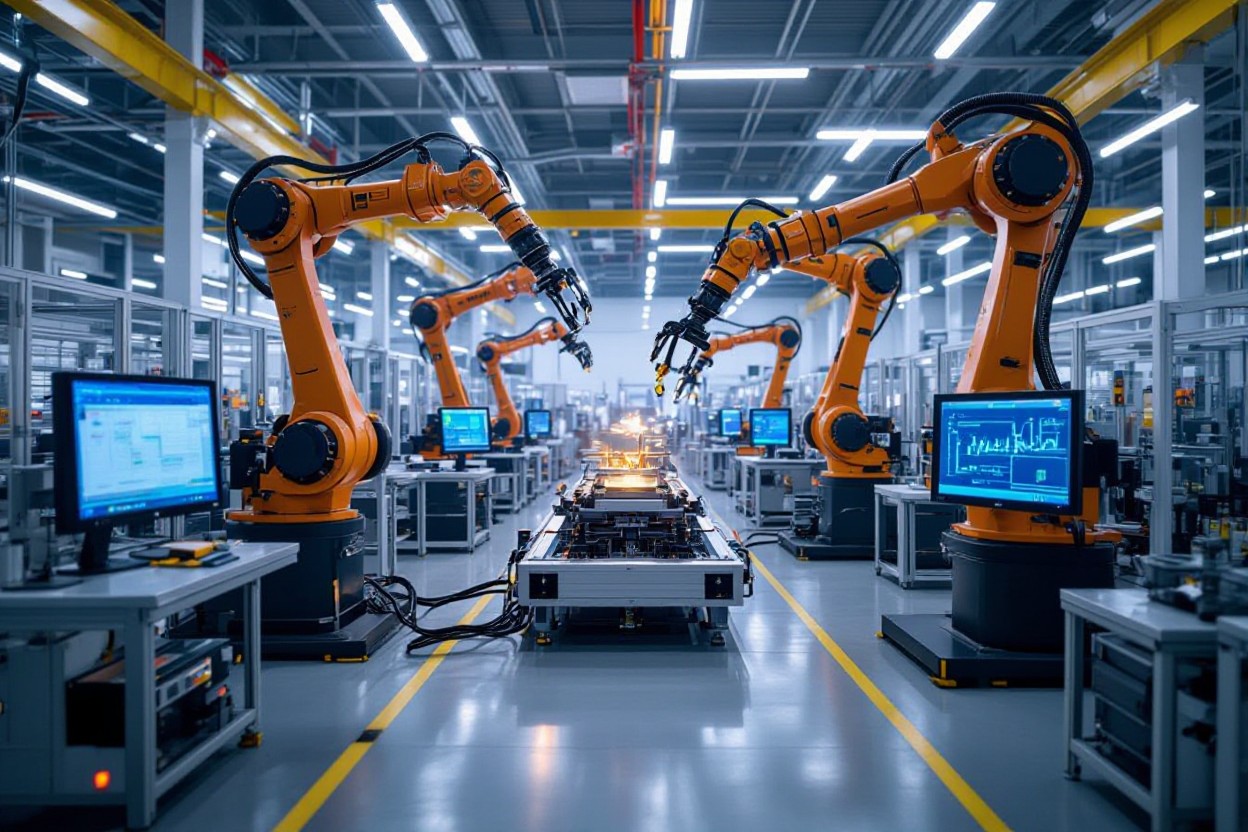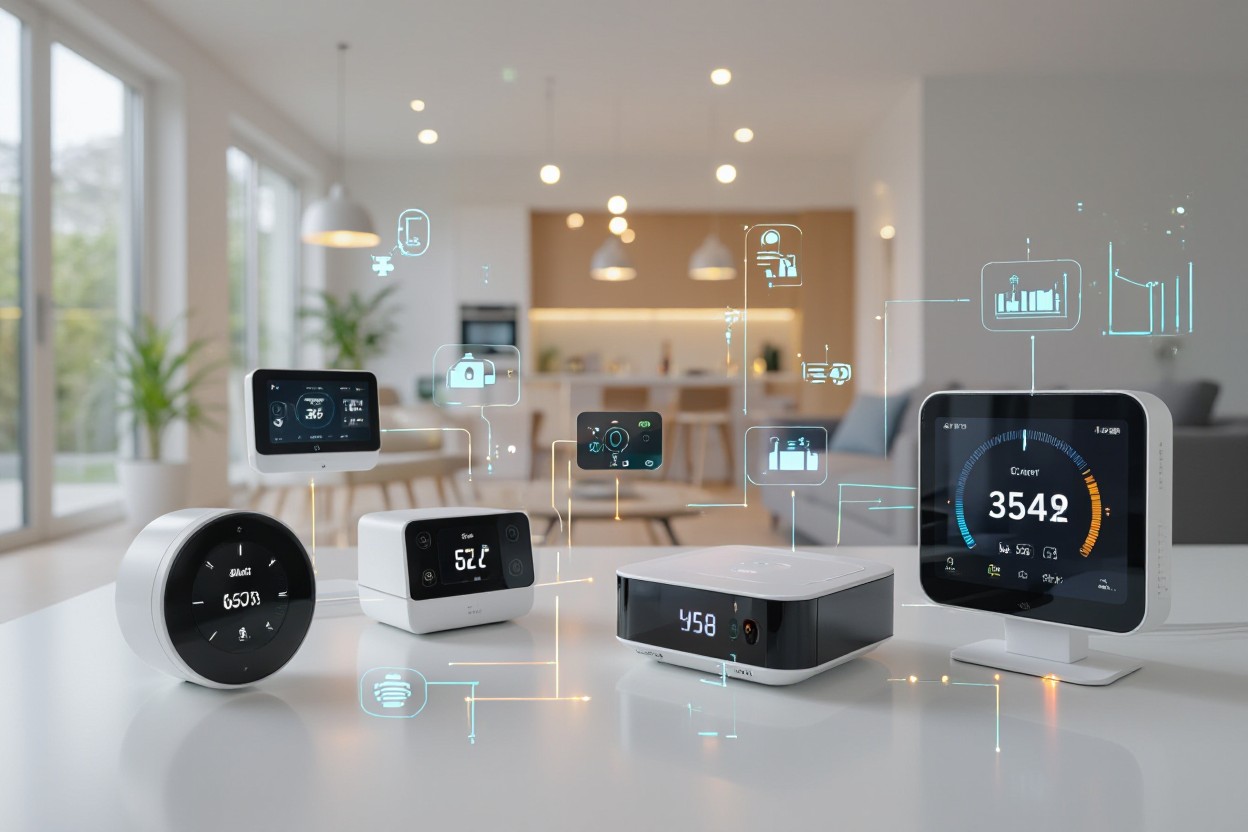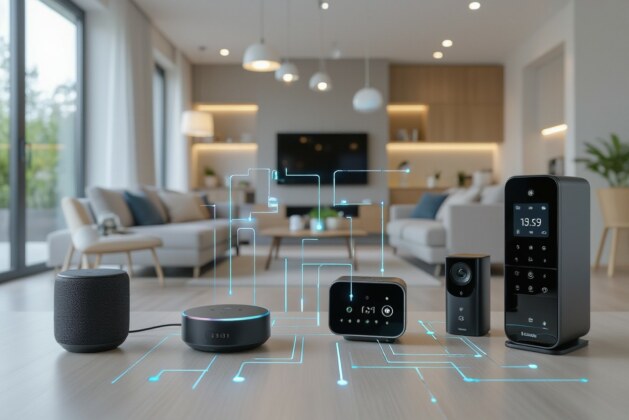Many people today interact daily with the Internet of Things (IoT), a vast network where devices communicate seamlessly to improve our lives. I want to help you understand how this technology connects everything from your home appliances to city infrastructure. While IoT offers exciting benefits like smarter homes and enhanced efficiency, it’s important to be aware of the potential risks around privacy and security vulnerabilities. By learning about IoT, you can better safeguard your information and embrace the innovations this interconnected world provides.
The Backbone of Connectivity: How IoT Devices Communicate
You’ll find IoT devices rely on a complex web of communication methods, linking sensors, gadgets, and systems seamlessly. Wireless technologies like Wi-Fi, Bluetooth Low Energy (BLE), Zigbee, and cellular networks create dynamic paths for data exchange. Each protocol serves specific use cases—for instance, Zigbee excels in low-power smart home devices, while 5G accelerates real-time data transfer in industrial IoT. This intricate connectivity backbone ensures that countless devices stay in sync, monitoring environments, automating tasks, and responding instantly to your inputs or changing conditions.
Protocols and Standards Driving IoT
IoT thrives on standardized protocols like MQTT, CoAP, and HTTP that manage efficient messaging between devices and servers. MQTT, often used in smart agriculture, features lightweight publish-subscribe messaging, reducing bandwidth use. Meanwhile, CoAP suits constrained devices in smart city sensors. These protocols enable interoperability across diverse hardware from various manufacturers, preventing vendor lock-in and fostering scalable ecosystems that evolve with your growing IoT infrastructure.
The Role of Cloud Computing in Data Management
Cloud platforms like AWS IoT and Microsoft Azure serve as centralized hubs processing vast IoT data streams. Cloud computing supports scalable storage, real-time analytics, and remote device management, which enables rapid responses and predictive insights. This setup avoids local bottlenecks, offloading heavy computation and allowing your devices to focus on data collection.
Building on this, cloud computing transforms raw IoT data into actionable intelligence by integrating AI and machine learning tools directly within its infrastructure. For example, predictive maintenance in manufacturing plants leverages cloud analytics to identify equipment anomalies before failures occur, saving significant downtime and costs. The elasticity of cloud resources means you can handle traffic surges seamlessly during peak usage, while enhanced security features protect sensitive data in transit and at rest. Cloud-based IoT platforms thus become the command centers orchestrating your entire connected ecosystem with precision and adaptability.

Everyday Examples: How IoT Enhances Daily Life
You see IoT’s influence in countless everyday scenarios, transforming convenience and efficiency. From smart appliances adjusting temperatures based on your schedule to city traffic lights communicating to reduce congestion, IoT seamlessly integrates into life. It offers personalized, data-driven benefits that few technologies match, improving comfort, safety, and resource management while quietly working in the background of your daily routine.
Smart Home Devices and Automation
Smart thermostats like Nest learn your schedule and adjust heating or cooling accordingly, saving up to 15% on energy bills. Automated lighting systems detect occupancy to switch off unused rooms, while voice-controlled assistants such as Amazon Echo orchestrate everything from music to security cameras. I find these devices create a rhythm in the home that not only simplifies tasks but also fosters energy efficiency and peace of mind.
Wearable Technology: Health Monitoring in Real-Time
Wearables such as the Apple Watch or Fitbit continuously monitor vital signs like heart rate, sleep patterns, and physical activity, providing real-time alerts about abnormalities. They integrate with smartphones to deliver personalized health insights and even detect conditions such as atrial fibrillation early, enabling timely intervention.
Diving deeper, devices equipped with advanced sensors measure blood oxygen levels and electrocardiogram (ECG) data, enabling medical-grade tracking right from your wrist. For patients with chronic conditions, this means data can be shared remotely with healthcare providers, improving outcomes through proactive care. I see this as a game-changer in preventive health, where early detection and continuous monitoring minimize risks and reduce hospital visits. The seamless blend of IoT and health tech empowers you to take control of your well-being with unprecedented precision.

The Industrial Revolution 4.0: IoT in Business and Industry
The fourth Industrial Revolution is defined by the rise of smart factories powered by IoT, where devices communicate seamlessly to optimize production. I see companies leveraging IoT sensors to gather real-time data across manufacturing lines, enabling rapid adjustments that minimize waste and downtime. Integrating IoT not only improves efficiency but provides actionable insights through data analytics, helping businesses stay competitive in a fast-evolving landscape dominated by automation and connectivity.
Transforming Supply Chains with IoT Solutions
IoT reshapes supply chains through extensive sensor networks that track goods from production to delivery with unparalleled precision. By equipping pallets and containers with GPS and environmental sensors, companies can monitor location, temperature, and humidity, thus ensuring product integrity and reducing spoilage. For example, DHL reported a 20% improvement in delivery times and a significant drop in lost shipments after adopting IoT-driven tracking, streamlining inventory management and enhancing customer satisfaction.
Predictive Maintenance and Its Impact on Operations
Predictive maintenance uses IoT sensors to continuously monitor equipment health, predicting failures before they occur. This approach shifts companies away from routine scheduled servicing to condition-based interventions, drastically cutting unexpected downtimes. For instance, General Electric’s implementation of IoT-enabled predictive maintenance on their turbines led to a 10-15% increase in asset uptime, showing how data-driven insights translate directly into operational savings and improved reliability.
Diving deeper, predictive maintenance employs machine learning algorithms analyzing data like vibration, temperature, and acoustics to detect anomalies indicating wear or malfunction. Real-time alerts enable maintenance teams to act promptly, optimizing maintenance schedules and extending asset lifespan. Over time, organizations see not only cost reductions from fewer breakdowns but also enhanced safety by preventing catastrophic failures. The ability to predict and prevent equipment issues revolutionizes operational workflows, turning maintenance from a reactive chore into a strategic advantage that keeps production running smoothly.

Navigating the Risks: Security and Privacy Challenges
The rapid expansion of IoT devices introduces a landscape riddled with security risks and privacy concerns. With billions of connected endpoints, each device presents an entry point for cyberattacks or unintended data exposure. Hackers exploit weak authentication, outdated software, and unsecured networks, often leading to data breaches or botnet attacks like Mirai. As I evaluate how these risks scale, I notice that both personal and industrial IoT systems remain vulnerable without layered defenses and continuous monitoring.
Common Vulnerabilities in IoT Ecosystems
Many IoT devices suffer from insufficient encryption, poor update mechanisms, and default credentials, making them prime targets for attackers. For instance, unpatched smart cameras or connected thermostats can be hijacked to invade privacy or launch DDoS attacks. Beyond software flaws, hardware limitations—like limited processing power—restrict the use of robust security protocols, leaving many endpoints exposed to firmware exploits and unauthorized data interception.
Strategies for Enhancing IoT Security
Implementing a multi-layered security model significantly raises the bar for attackers. Deploying end-to-end encryption, enforcing strong authentication, and ensuring timely software updates reduce vulnerabilities across the entire IoT ecosystem. Network segmentation and anomaly detection algorithms further obstruct unauthorized access. I’ve found that integrating hardware-based security modules, like Trusted Platform Modules (TPMs), in devices also fortifies resistance against tampering and key extraction.
Diving deeper, strategic security begins at the design phase with secure coding practices and threat modeling. Manufacturers embedding secure boot processes prevent unauthorized firmware alterations, while IoT platforms that support automatic patch management ensure devices stay current against emerging threats. Additionally, user education on changing default passwords and monitoring device behavior adds an crucial human element to the defense. By promoting openness and collaboration among vendors and regulators, industry-wide standards like the IoT Security Foundation’s guidelines can harmonize protective measures across diverse devices, enhancing trust throughout your IoT network.
The Future of Connectivity: Emerging Trends in IoT
Advancements in connectivity and processing power are accelerating the capabilities of IoT far beyond its initial applications. I observe how edge computing, enhanced sensor technologies, and blockchain integration are shaping a future where devices communicate with unprecedented speed, security, and autonomy. These trends not only optimize data flow but also foster smarter decision-making directly where data is generated, from smart cities to personalized healthcare. By staying ahead of these developments, you can better anticipate how your own connected environments will evolve and the opportunities they hold for innovation and efficiency.
5G and Its Impact on IoT Development
5G networks are a game-changer for IoT, offering up to 100 times faster speeds and significantly lower latency compared to 4G. This leap allows devices to transmit and receive data almost instantaneously, enabling real-time applications like autonomous vehicles and remote surgery. I’ve seen industries leverage 5G to deploy massive sensor networks, improving everything from traffic flow to energy management. The network’s capacity to connect tens of thousands of devices per square kilometer means your IoT ecosystem can scale dramatically without compromising performance or reliability.
The Growing Importance of AI and Machine Learning in IoT
AI and machine learning are transforming IoT from a network of connected devices into an intelligent ecosystem capable of predictive analytics and autonomous decision-making. I notice these technologies analyze vast amounts of sensor data to detect patterns, identify anomalies, and optimize operations across smart homes, industrial systems, and healthcare devices. Their integration allows for proactive maintenance, personalized user experiences, and enhanced security by predicting threats before they manifest.
Diving deeper, AI models embedded in edge devices can process data locally, reducing the need for constant cloud communication and improving response times. For example, predictive maintenance in manufacturing leverages machine learning algorithms to forecast equipment failures days in advance, saving companies millions. In smart cities, AI analyzes traffic and environmental data in real-time to dynamically adjust signaling and reduce congestion. The synergy of IoT with AI and machine learning opens a realm of possibilities, enabling you to extract actionable insights that were previously unattainable through raw data alone.
Conclusion
Following this exploration of the Internet of Things (IoT), I understand how it fundamentally changes the way we interact with the world by connecting everyday devices to the internet. I encourage you to consider how your own life is influenced by this network of smart technology, which offers convenience, efficiency, and new possibilities. As you encounter IoT in various forms, you’ll see how it bridges the gap between the physical and digital, creating a more interconnected and responsive environment that continues to evolve and shape our daily experiences.





Leave a comment